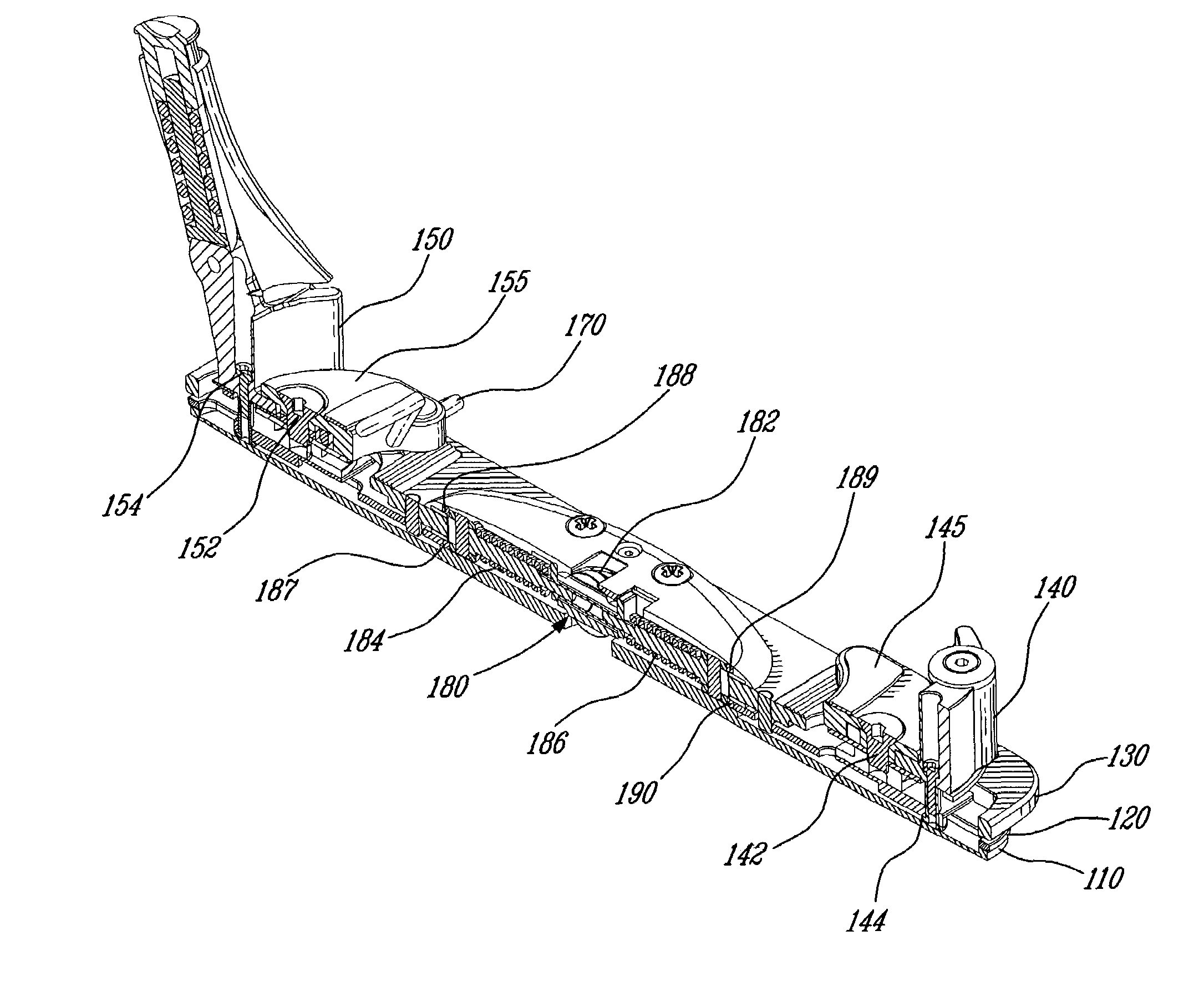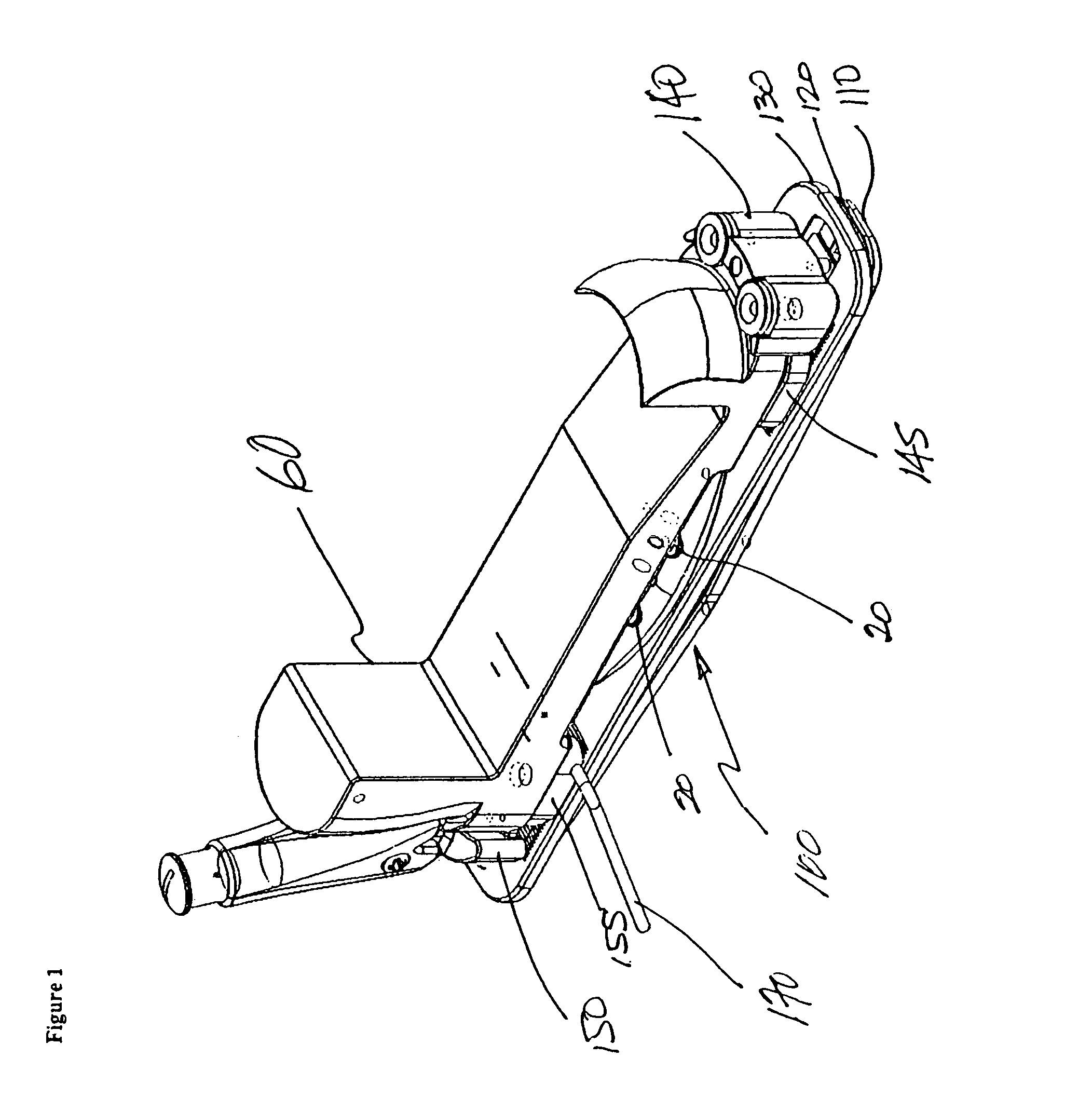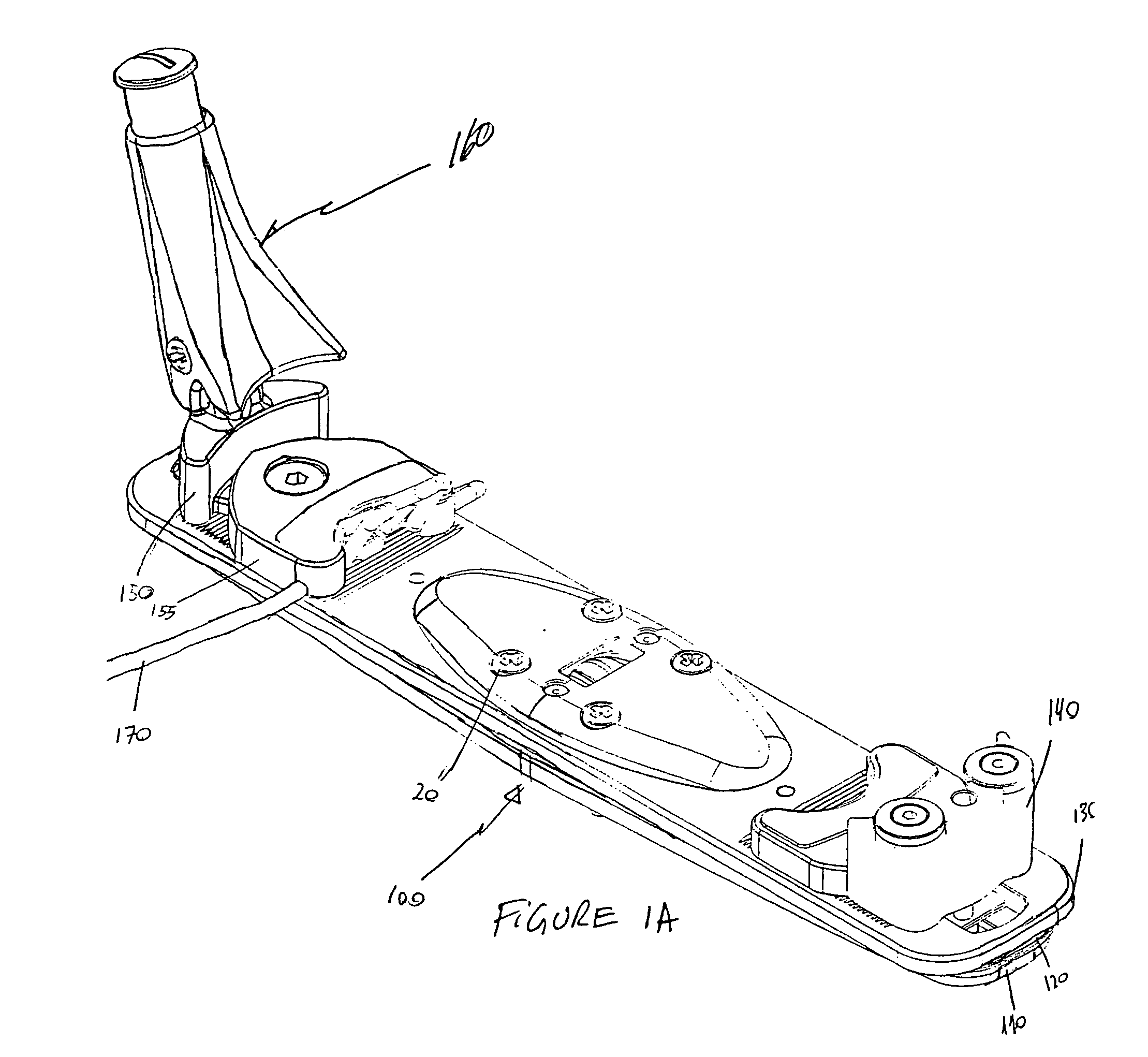Ski binding
a technology for ski boards and bindings, applied in skis, snowboard bindings, skis, etc., can solve the problems of skiboard design that cannot and probably cannot be reasonably designed, tibial fractures, and skiboards that cannot and cannot be safely designed. , to achieve the effect of different bias
- Summary
- Abstract
- Description
- Claims
- Application Information
AI Technical Summary
Benefits of technology
Problems solved by technology
Method used
Image
Examples
Embodiment Construction
[0039]The invention will be better understood in the following detailed description of the preferred embodiments with reference to the drawings.
[0040]FIGS. 1 and 2 show the preferred embodiment of the invention. In this embodiment the binding 100 is mounted on a ski 10. The binding is separated from the ski by a bottom pad 110, which allows the ski to flex and makes sure that the ski is not harmed by the binding when flexing. Resting on the bottom pad 110 is a static base plate 120. The central area of the static base plate 120, contains the biasing means 180 (shown in FIGS. 5 and 6), which hold top plate 130 in its normal position. Top plate 130 is mounted on top of the static base plate 120 in such a way that the top plate 130 can pivot laterally around the biasing means 180. Mounted on the top plate 130 are the heel holding cup 150 and the toe holding cup 140. These cups work to hold a boot (shown schematically as 60) to the binding. The heel cup 150 is also fitted with conventio...
PUM
 Login to View More
Login to View More Abstract
Description
Claims
Application Information
 Login to View More
Login to View More - R&D
- Intellectual Property
- Life Sciences
- Materials
- Tech Scout
- Unparalleled Data Quality
- Higher Quality Content
- 60% Fewer Hallucinations
Browse by: Latest US Patents, China's latest patents, Technical Efficacy Thesaurus, Application Domain, Technology Topic, Popular Technical Reports.
© 2025 PatSnap. All rights reserved.Legal|Privacy policy|Modern Slavery Act Transparency Statement|Sitemap|About US| Contact US: help@patsnap.com



